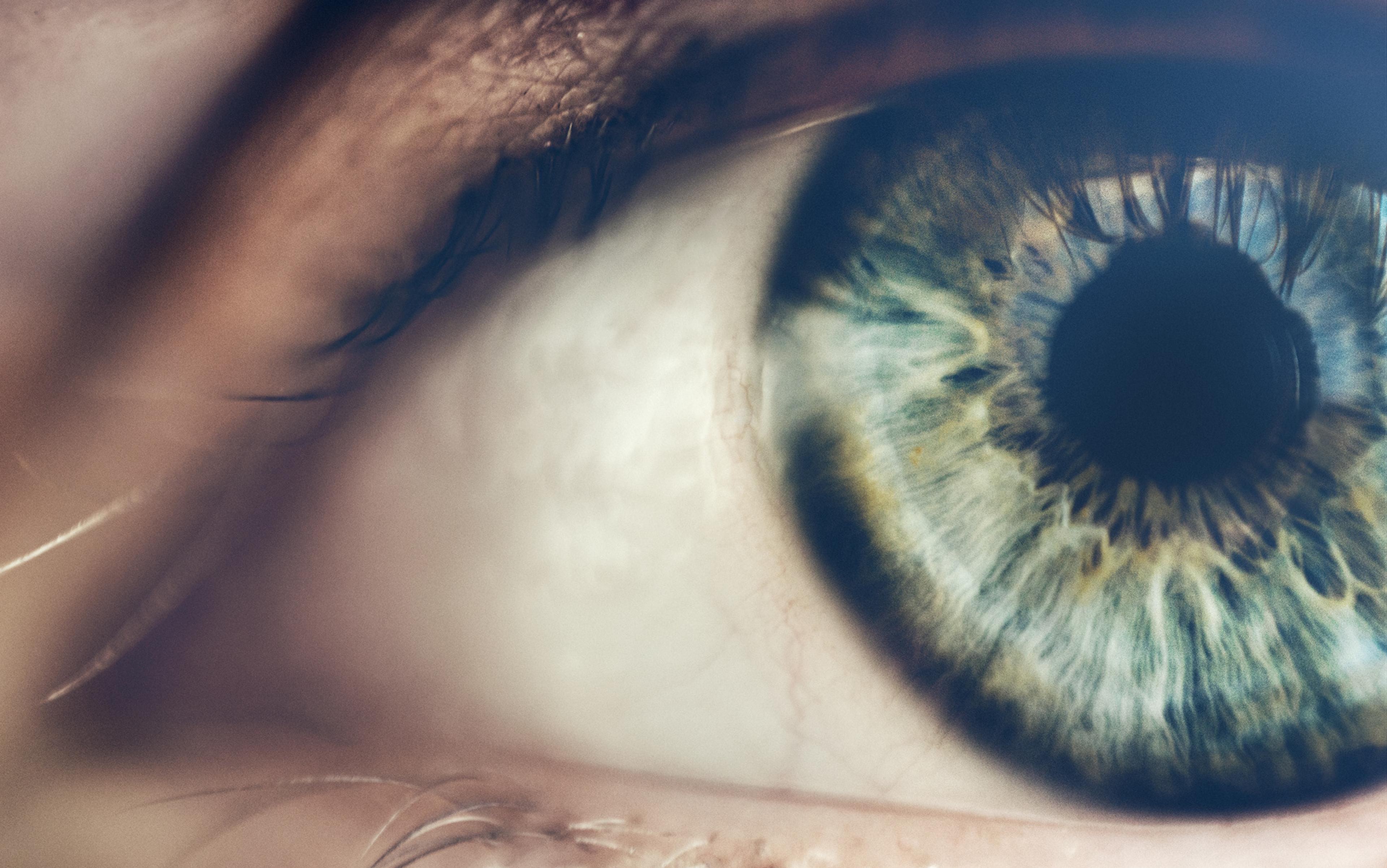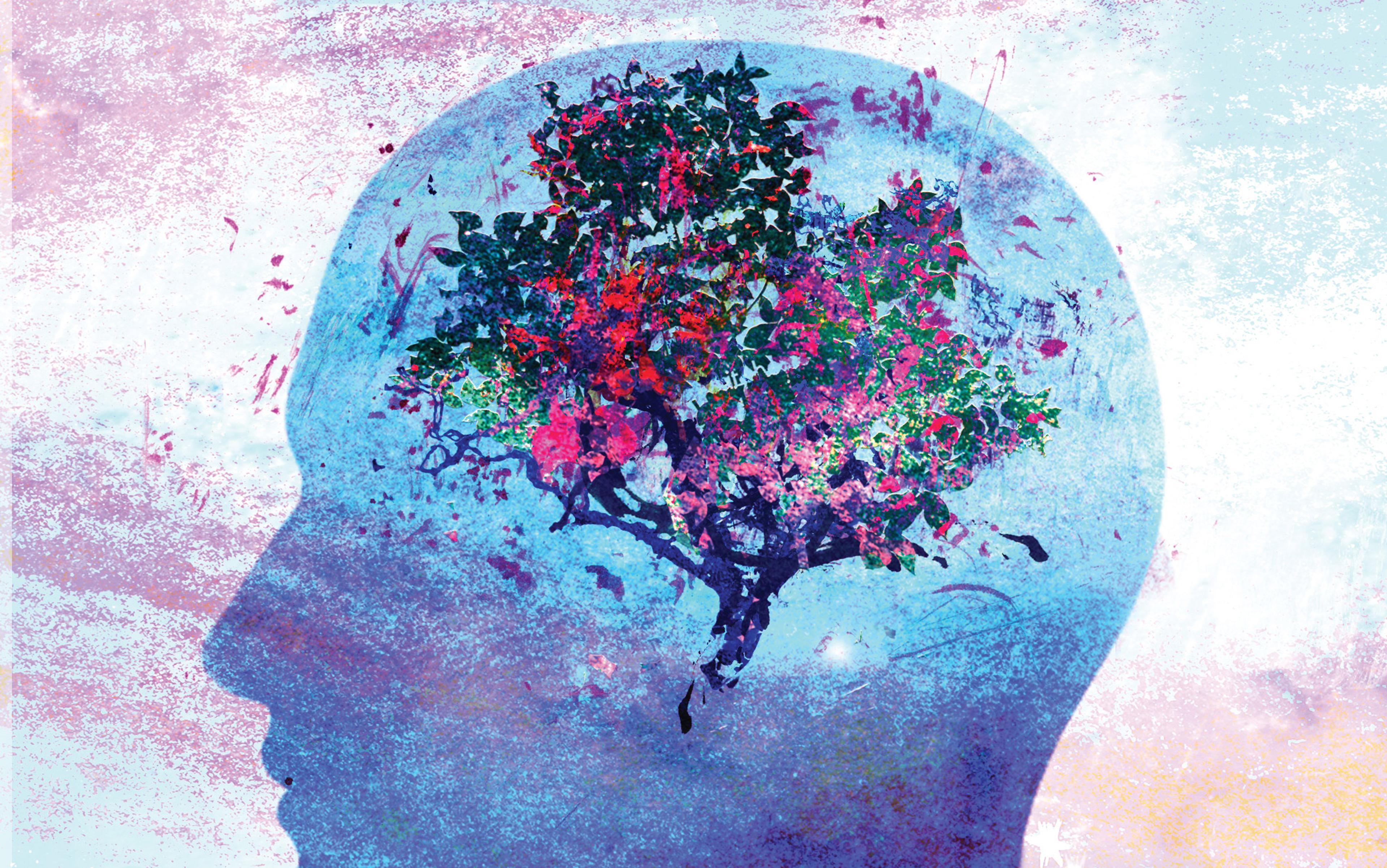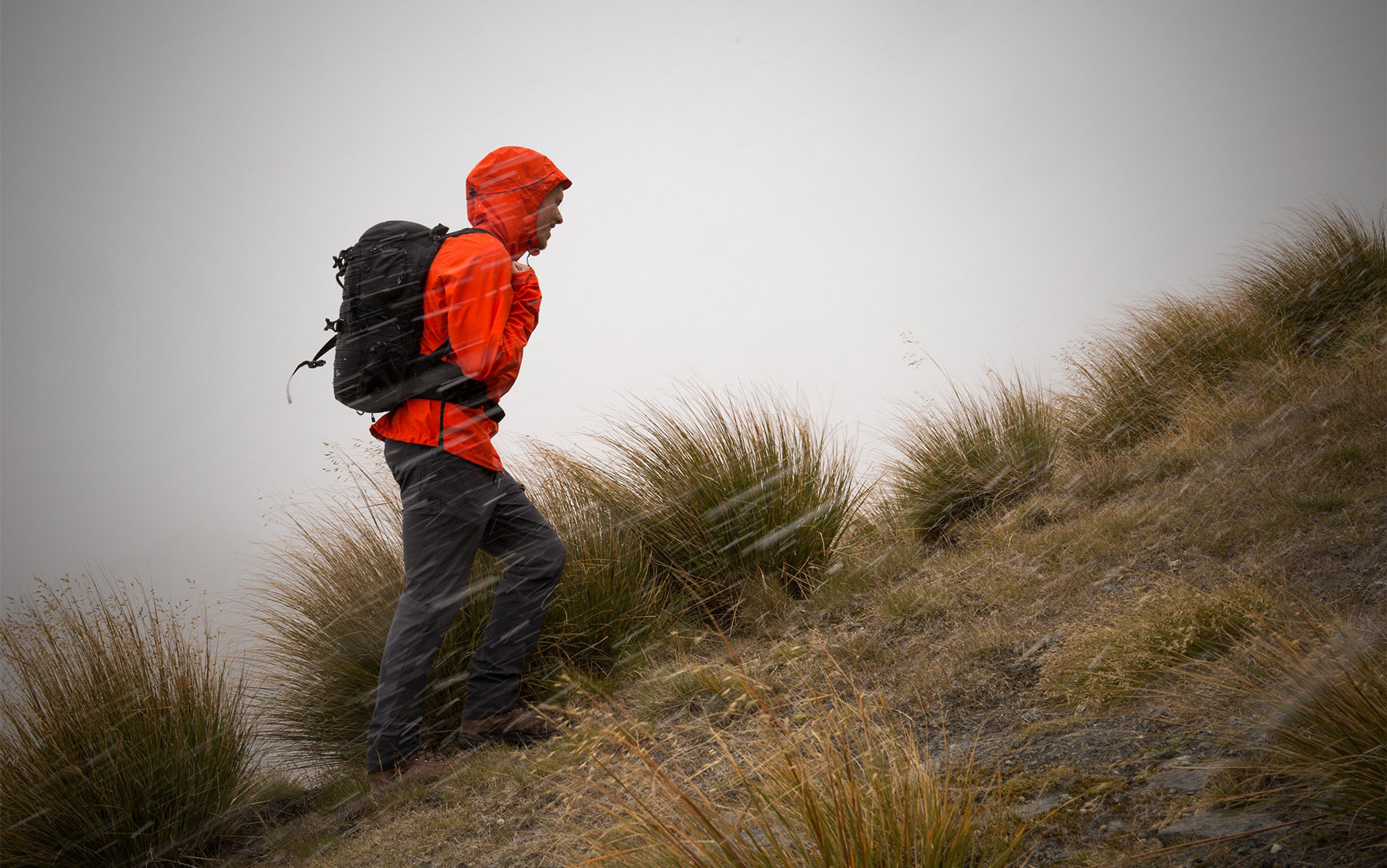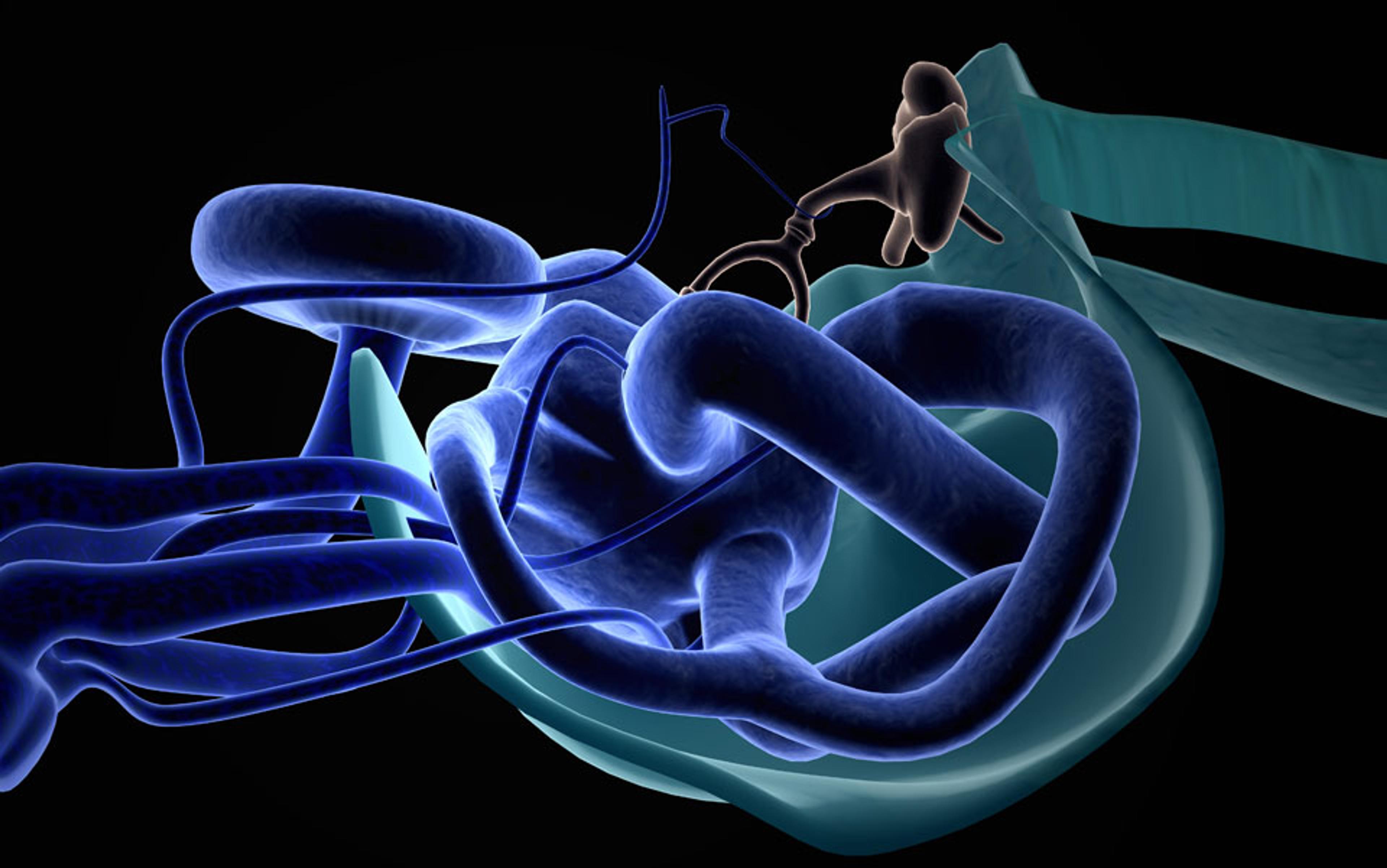I wore leggings that Tuesday. I never wore leggings to work, but that winter three years ago the New Orleans heat was in hibernation. Ice climbed up my windows, and my sweater almost reached my knees. I whispered: ‘Be good, I love you,’ to the puppy sound asleep in his crate and the groggy cat still snuggled in bed before I stepped out into the unseasonably cold January air. A neighbour’s motion-sensor light blinked on to help me navigate the blackness. It was 12:50am; my shift at the news station started in 10 minutes. My fingers became numb quickly, making it difficult to turn the key in the lock. I speed-walked to my car, my beautiful, white Hyundai Kona, my college graduation gift from my parents. I twisted the heat all the way up, slapped the seat-heater button, and turned my Spotify to Maggie Rogers’s new album. With my hands pulled into my North Face sleeves, I grabbed the wheel.
I did an illegal U-turn to get out of my one-way street, cutting a whole minute off my arrival time. As I slowed at the intersection, headlights warned me to step on the brake. The red car seemed to slow as it passed in front of me, eventually turning into my street, barely missing my car. I pulled out.
‘Turn signal, dumbass,’ I mumbled, still frozen and half asleep. My phone lit up as I drove. It was a short journey; my seat heater barely had any time to thaw my insides before I got to the news station. Christmas lights and the occasional working streetlamp lit up the neighbourhood: the narrow shotgun houses with too many plants on their porches, the doors bright yellow, sleepy blue or lively green. When I would drive home later that morning, the people of Mid-City would be bundled up, starting their days with frigid dog walks and coffee runs.
I reached down to check the message from my boyfriend, Henry, warming my hand over my coffee tumbler. I slowed to turn and respond, eyes darting between my phone and the road. I had been in my car all of four minutes when I rounded the next corner, foot poised over the brake as I closed in on the stop sign. Flying headlights in my rear-view mirror caught my attention. The red car belted down the street. I stopped before the sign to let them go ahead.
They must be in some hurry. Maybe they have somewhere to be. At one in the morning?
The car screeched in front of me, cutting me off. Three doors flung open, guns pointing directly at me: a 23-year-old woman who had never really had anything horrible happen in her life. Suddenly, I was wide awake, but my mind was blank. I screamed, I cried, I shook. I rolled down the window. They shouted at me: ‘Put it in park, PUT IT IN PARK.’ Tears poured icy hot down my face. The mascara glued my lashes together. I begged for my life; something I had never considered having to do. ‘Please, please,’ I screamed over the banging of the guns on the roof and my skyrocketing heart rate. My car nudged theirs.
‘PUT IT IN PARK.’
I reached over and thrust the car into park. A hand slid along the seatbelt, unbuckling me from the live-action horror movie. He used just enough force to get me out. ‘Get out, get out! DROP THE PHONE.’ I obliged because what choice did I have? ‘WHERE ARE THE KEYS?’ he screamed. I cried out, telling him they were in my pocket. I could no longer control my sobs. He reached into my jacket, grabbed my keys, and got into the car – my car, warmed with Maggie’s voice leaking from the speakers. The other men with guns jumped in beside him. The red car’s tyres spewed gravel as their accomplices drove off; my white car squealed after.
I stood in the cold, in the middle of a run-down street, surprised no one had heard what had just happened. No lights flicked on, no one stepped out to see who or what was making hysterical noises in the middle of the night. I had nothing. I felt naked.
I ran to the nearest gas station – probably a quarter mile up the road. The chill wafted in from the bayou that separated the nice houses from the even nicer houses. My nine-year-old combat boots thunked onto the pavement. I could feel my feet rubbing the thin insides, a sole coming loose. Between the sobbing and the running, I could barely breathe, let alone talk, once I stepped into the artificial light.
‘I was just carjacked. Could I please use your phone?’
The cashier looked scared, taking in my heaving chest, mascara tears and red nose. I used the gas station phone to call 911; the operator pressed me for the street corner where it had happened. In that moment, the only clear thing in my mind was the scene, playing over and over. I called my mom. The first time I called, it went to voicemail. It was 2am her time. Fresh tears fought to escape, though my cheeks weren’t dry yet. I dialled again.
By the time the officers showed up, I had reviewed the mental footage a hundred times
‘Hello?’ she answered, dreams dripping from her voice. But this was a nightmare.
‘Mom,’ I half cried. The relief ripped me open. The tears fell. It took me a minute before I could even tell her why I had woken her up.
‘I was carjacked on my way to work. They had guns, so many guns. I called the police. I am OK, but can you please call Henry and have him meet me here?’
She was calm, much calmer than I would have expected. Not that this was something I had ever expected. Every day at the news station, we ran stories about crime victims, people who had lost everything, sometimes their lives, to a group of strangers bent on destruction. Never had I allowed myself to think that I could be next. In the gas station, I shook in my tattered combat boots and leggings, overcome with fear. It had happened to me. The world shifted, and my mind fell down a deep black hole.
My mom and I hung up, and I called work, letting them know I wouldn’t be able to make my shift that night. I stood awkwardly by the cash register waiting for the police to arrive, intermittently crying, not bothering to wipe the black streaks off my face. The guy behind the counter left to get me an old milk crate to sit on, his pity palpable. Twenty minutes later, Henry and his sister showed up. I took one look at his face and the dam broke. I heaved into his chest while he consoled me. He called the police again.
By the time the officers showed up, I had reviewed the mental footage a hundred times, but I still couldn’t tell them what kind of red car it was or whether the men were wearing masks or exactly how many of them there were. I didn’t know. I knew only that the car was red, my things were gone, and there were so many guns. I felt as if I were watching myself from a vent in the ceiling, helpless, giving them what little information I could.
For weeks, I lost myself. Time passed in a blur of fear and vulnerability. Seeing a reflection made me jump. I couldn’t be alone in my own apartment or my heart rate would shoot up. I didn’t drive myself to or from work, even after the police found my car. The officers told me the men had been spotted the day after they’d stolen my car, joyriding at 90 miles an hour down a one-way street; they then ditched the officers and the car altogether. The police found it the next day, two days after the crime, undamaged and parked in a random neighbourhood with a Louisiana licence plate in place of my Michigan one. That was the last time I heard from the detectives. The men with guns could still be out there.
I lay in bed at night, willing myself to sleep. When I finally did, I woke up crying or shaking or both. I retold the story to overly curious co-workers. I zoned out of conversations. I moved apartments. I never wanted to leave my bed. I wanted to stay in the comfort of Henry’s arms all the time. Even when I was there, I felt alone. The saying about how people who go through traumatic events end up going through the motions, watching themselves, trapped in their own heads, is true. I felt broken. I felt like I could never be fixed.
Three weeks after the carjacking, I started seeing a therapist. Maybe this constant horror movie on the backs of my eyelids would stop. Dianne Markel welcomed me into her spacious office, decorated with a beautiful wooden bookcase behind her desk, thriving plants and a softly humming air purifier. The woman had a kind face, one that told you she was really listening.
Markel worked with people who went through traumas, often using a technique called eye movement desensitisation and reprocessing, or EMDR. First developed in 1987, EMDR is an eight-phase psychotherapy technique that has mostly been used to treat veterans and others with symptoms of post-traumatic stress disorder (PTSD). Today, the approach is becoming more common, especially for people with drug or alcohol addiction, as its therapeutic benefits are recognised. EMDR not only helps patients to process their trauma, but also to develop coping skills, calm the stress response, and sustain ongoing self-improvement. It can also transform their beliefs, helping them let go of negative thoughts and become open to recovery.
The first phase of EMDR is establishing trust. If the patient doesn’t trust or work well with the therapist, they might hold back during the process, not allowing themselves to fully heal. Markel’s comfortable leather couch moulded itself to me, even as I sat on the edge. Her soft voice matched her gentle demeanour, and she apologised for what had happened to me, struggling to find the words herself. She didn’t pretend to understand what I was going through or rush me. Her eyes seemed to smile as she shared bits of herself with me. She made me laugh with a story about how she had worn two different shoes to work the day before: a cheetah-print flat and a black ballerina slipper.
It was easy to let my guard down. Well, ‘easy’ for someone who had just lost all their faith in humanity and badly wanted to reverse back into what life was like before the incident: naive, normal and devoid of a seemingly endless vulnerability. Markel assured me that what I was feeling was more than normal, and it was OK to be afraid. But she also promised a light at the end of the tunnel.
During that same first visit, we entered the second phase of the treatment: preparation. Markel handed me a thick stack of positive mantras to repeat to myself when I got overwhelmed. I was supposed to pick one and say it slowly three times as I breathed in and out. Even though I chose a saying (I am OK; I am safe), in the weeks before our second meeting, the anxiety would usually be so consuming, the mantra did little to help. My therapist also explained what we would be doing and why it should help me recover. She would guide me through all the steps, but it would be up to me to open up fully to the treatment.
‘We can stop at any time,’ she said. I placed my trust in her.
Rhythms change the neural networks that haven’t adapted to the trauma
In our next session, we jumped right into the third phase: assessment. Markel had me hold a TheraTapper – two green rubber handles, one in each hand, that vibrated back and forth and connected to a small machine where I could choose the frequency and strength of the vibrations. Even though ‘EM’ in EMDR stands for ‘eye movement’, the tapper’s alternating, calming vibrations or tones in one’s hands, feet or ears have the same effect. They’re supposed to decrease the negative emotion associated with the traumatic event. My clammy right hand would feel the quiet buzz, then the left. I sank into the rhythm.
According to the EMDR International Association, the TheraTapper’s rhythms connect with the biological mechanisms involved with rapid eye movement (REM), which helps those undergoing EMDR begin to process, digest and store the memory and trauma. Basically, the rhythms help to speed up the healing process by mimicking REM, which changes the neural networks that haven’t adapted to the trauma. The stimulation facilitates communication across the brain to help make sense of traumatic memories. I was not in a trance, but rather recognising the incident as if I were a bystander, taking myself out of the picture and replacing the fear with appreciation for the event as it was: a thoughtless crime against an undeserving victim.
For two minutes, Markel had me close my eyes, grip the tappers and envision one part of the carjacking. It was not hard, as the scene played vividly through my mind every time I thought I was slipping into normalcy. The worst wake-up call. I watched myself succumb to the terror, become a victim over and over. My therapist had me focus on a negative thought that I associated with that part of the memory: I am weak. I am pathetic. I am helpless. I am scared. I am unsafe. I am broken. I counted the taps until it was over. Then came the difficult part. Once the two minutes were up, Markel had me rate how disturbing the negative thoughts felt on the Subjective Units of Disturbance Scale of 0 to 10, with 10 being the most disturbing. That fear, or negative thought, according to the EMDR International Association, is ‘locked in the nervous system’ after a traumatic event, which prevents the brain from processing it in a way that allows the victim to live without fear. My eyes focused on the spider plant sitting next to Markel who was listening attentively. After I answered a solid 9 on the Subjective Units of Disturbance Scale, she asked me to describe what I saw, how it made me feel, why I felt the way that I did, and where I felt it in my body.
A bomb went off periodically, melting my insides, forcing my heart to race, my hands to clench, my chest to tighten. That’s where I held the trauma. It felt like I had to physically pull myself out of that moment, away from the armed men jumping out of their car, from the guns pointed at me. I cleared my throat to avoid croaking out a sob. ‘I did nothing to stop it,’ I said during one of our first sessions. But then, what would I have done? I don’t own a weapon. Even if I did, I was drastically outnumbered. But I didn’t fight them off. I allowed myself to be a victim.
In the fourth phase, desensitisation, it was time to identify the negative emotions that had attached themselves to the crime. I breathed in, closed my eyes, and yearned for the TheraTapper to work its magic, still playing tag with vibrations. Terror, vulnerability, weakness, frustration, sadness, absence, anxiety, anger. I word-vomited up everything that I had been feeling about that night, surprised not to see a puke-coloured stain on the carpet. The second time I immersed myself into the rhythms, Markel had me detach my mind from the shaken version of myself struggling to put the car in park and instead watch from above, like my soul had left my body. Then, she listened to how I broke down the scene, how I felt, and turned around my phrases so I could see that this carjacking was not my fault. She spoke to me in a way that told me I would survive this and come back stronger.
In the fifth phase, installation, Markel asked me to identify a positive belief about myself during the moment I had pictured. I don’t remember exactly what my belief was in that first session; mostly, I was concentrating on sharing as much as I could because I just wanted to get better. It was probably along the lines of I did the right thing, because the positive belief is supposed to reflect a more appropriate thought on what happened. For two more silent minutes, I focused both on the vibrations and seeing myself doing the right thing when I was attacked. While my eyes were closed, I willed the mantra to get stronger. Markel’s voice pulled me out of the trance. She asked me to rate how true my positive belief felt in that reflection on the Validity of Cognition Scale, where 1 equals completely false and 7 equals completely true. My answer wavered between 2 and 3.
Then came the sixth phase: body scan. I identified the manifestation of the terror in my body as well as the emotions that bubbled up, so Markel could help me try to relieve them. First up, hands: my nails dug into my palms, white knuckles protruding. Why did I feel the terror there? What did my hands hold? An indescribable amount of tension. I shut my eyes again as my therapist and the TheraTapper guided me through a short meditation, targeting the terror in order to help resolve it. My hands had always been an outlet for anxiety – I grew up picking the skin around my cuticles until I bled or my mom got annoyed. For the past month, my hands had worked overtime. My fingernails looked like I’d just clawed my way out of a battlefield: bloody and raw. Slowly, I synced my breathing to the TheraTapper’s vibrations, allowing my fingers to unfold and my hands to relax and stretch. For the first time since the night of the event, the knot in my chest started to release.
I wasn’t burying the terror; I was learning to accept it and grow stronger
At the end of each session, the goal of the EMDR therapy was to feel better, generally, than when I’d walked in. My therapist and I breathed deeply together. In. Out. In. Out. During the first six phases, I was in control. In order for me to remain in control, Markel briefed me on what I could expect, back in the real world, as we transitioned into the seventh phase: closure. The scene would likely continue to play out, and there might even be times when a new detail would emerge. It’s all part of the process. She gave me a series of self-calming techniques: supplements, journaling, meditation, mantras, just breathing. And then I was on my own until I set foot inside her cosy office again.
After the initial two sessions, we began with the eighth phase, re-evaluation, then went back and covered phases three through seven again. Markel and I would talk about my past few weeks in the real world. Was I handling the anxiety and fear better? Did the scene play out less frequently? Was I healing? We repeated that sequence once every two weeks for months. The goal was to get my ratings on the Subjective Units of Disturbance Scale down to ‘not very disturbing’, and the Validity of Cognition Scale up to ‘very believable’. The therapy aimed to release the memory from the front of my mind, allow me to come to terms with what had happened, then store the memory in the back of my mind, without locking it away. I wasn’t burying the terror; I was learning to accept it and grow stronger. I was in control.
It took us about four months of going through the phases before I got to that point, before I no longer needed EMDR. Some sessions were less challenging, while others still felt almost as difficult as the first. Reliving the carjacking, allowing the scene to play out, got easier, but the tension in my hands never fully dissolved. It was like a part of me never wanted to forget how I had felt in that moment.
To this day, I refuse to wear leggings to work. I hate driving in the dark, but I’m able to drive my white Hyundai Kona without succumbing to a panic attack. I harbour a general distrust of male strangers, but I’m strong enough to venture out alone. I still sync my breathing to the ghost of a TheraTapper when the anxiety gets to be too much. I clench and unfurl my fingers to release tension. My life is nowhere near where it was before January 2021. I will never not be the girl who was carjacked on her way to work in the middle of the night. But now, when I look back at the memory, I no longer see a victim. I no longer beat myself up for not doing anything to stop it from happening. I see a survivor.






